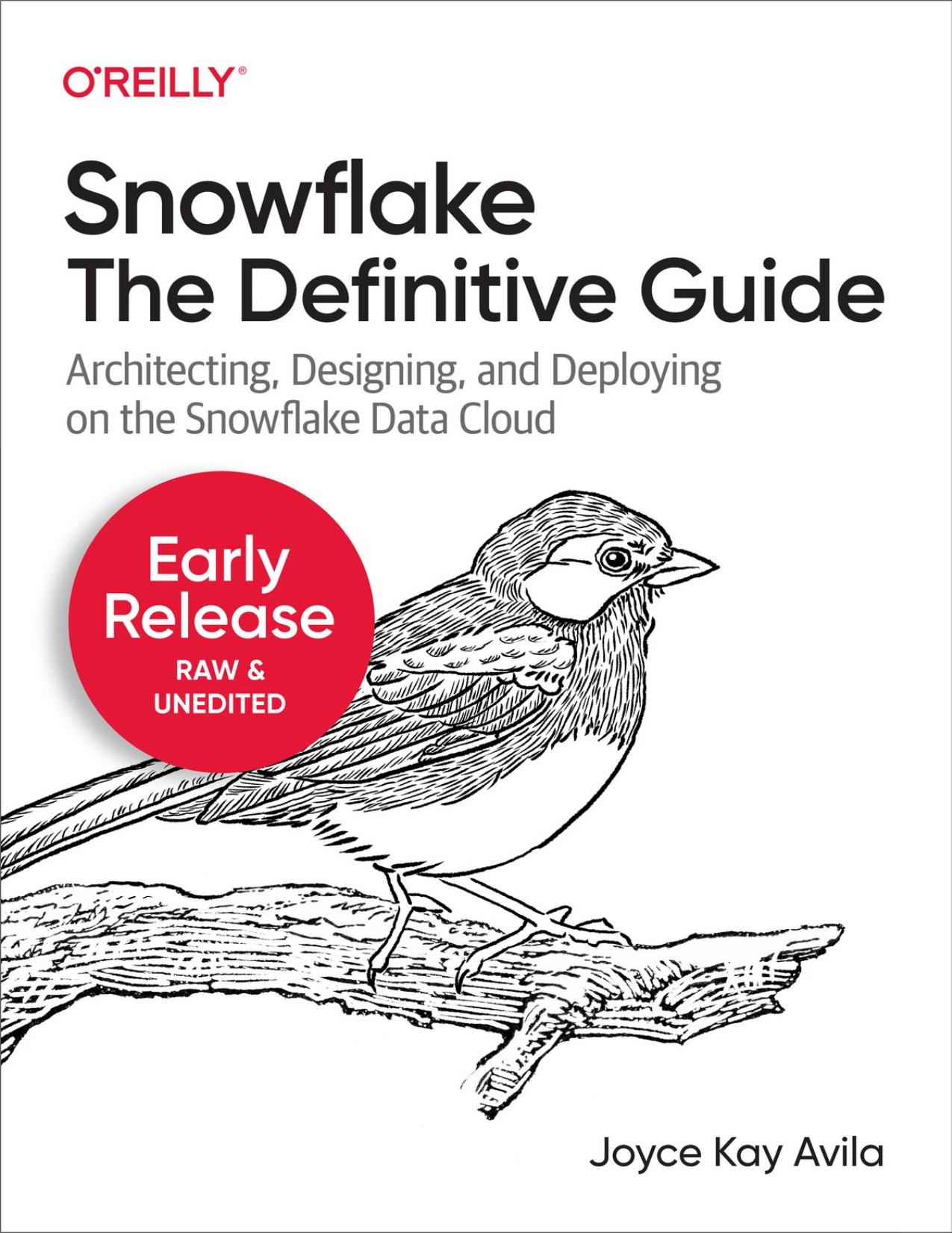Snowflake: The Definitive Guide by Joyce Kay Avila

Author:Joyce Kay Avila [Joyce Kay Avila]
Language: eng
Format: epub, pdf
Publisher: O'Reilly Media, Inc.
Published: 2022-09-24T16:00:00+00:00
If you need to cancel queries for a specific warehouse or user rather than the session, youâll want to use the ALTER command along with ABORT ALL QUERIES instead of a system control function.
Creating SQL & Javascript User-defined Functions (UDFs) and using Session Variables
SQL functionality can be extended by SQL user Functions (UDF), Javascript UDFs, and session variables. We took a deep dive into both SQL and Javascript User Defined Functions in the previous chapter, Creating and Managing Snowflake Architecture Objects, so weâll focus on learning more about session variables in this section.
Snowflake supports SQL variables declared by the user, using the SET command. These session variables exist while a Snowflake session is active. Variables are distinguished in a Snowflake SQL statement by a $ sign prefix and can also contain identifier names when used with objects. You must wrap a variable inside the identifier, such as IDENTIFIER($Variable), to use a variable as an identifier. Alternatively, you can wrap the variable inside of an object in the context of a FROM clause.
To see all the variables defined in the current session, use the SHOW VARIABLES command.
Some examples of session variable functions include:
SYS_CONTEXT and SET_SYS_CONTEXT
Download
Snowflake: The Definitive Guide by Joyce Kay Avila.pdf
This site does not store any files on its server. We only index and link to content provided by other sites. Please contact the content providers to delete copyright contents if any and email us, we'll remove relevant links or contents immediately.
| Access | Data Mining |
| Data Modeling & Design | Data Processing |
| Data Warehousing | MySQL |
| Oracle | Other Databases |
| Relational Databases | SQL |
Algorithms of the Intelligent Web by Haralambos Marmanis;Dmitry Babenko(11066)
Azure Data and AI Architect Handbook by Olivier Mertens & Breght Van Baelen(7633)
Building Statistical Models in Python by Huy Hoang Nguyen & Paul N Adams & Stuart J Miller(7618)
Serverless Machine Learning with Amazon Redshift ML by Debu Panda & Phil Bates & Bhanu Pittampally & Sumeet Joshi(7502)
Data Wrangling on AWS by Navnit Shukla | Sankar M | Sam Palani(7258)
Driving Data Quality with Data Contracts by Andrew Jones(7251)
Machine Learning Model Serving Patterns and Best Practices by Md Johirul Islam(6986)
Learning SQL by Alan Beaulieu(6213)
Weapons of Math Destruction by Cathy O'Neil(6148)
Big Data Analysis with Python by Ivan Marin(5892)
Data Engineering with dbt by Roberto Zagni(4908)
Solidity Programming Essentials by Ritesh Modi(4537)
Time Series Analysis with Python Cookbook by Tarek A. Atwan(4370)
Pandas Cookbook by Theodore Petrou(4067)
Blockchain Basics by Daniel Drescher(3511)
Natural Language Processing with Java Cookbook by Richard M. Reese(3112)
Hands-On Machine Learning for Algorithmic Trading by Stefan Jansen(3028)
Feature Store for Machine Learning by Jayanth Kumar M J(2908)
Learn T-SQL Querying by Pam Lahoud & Pedro Lopes(2891)
